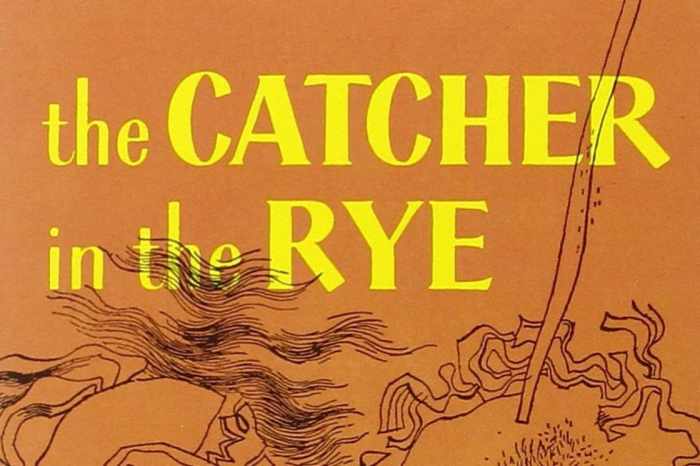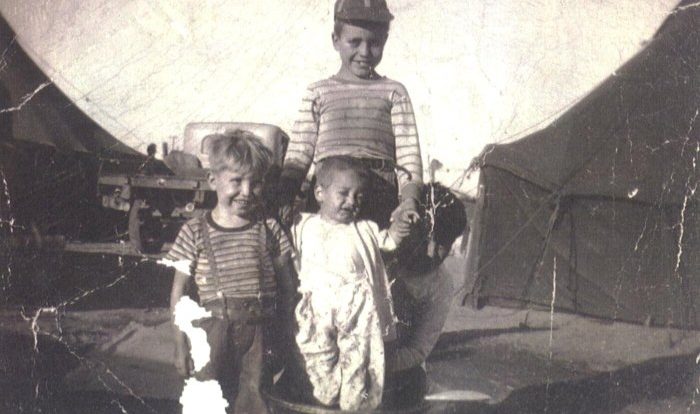Embark on a captivating journey with Catcher in the Rye Flit, a literary masterpiece that delves into the depths of identity, alienation, and the elusive search for authenticity.
Holden Caulfield, the novel’s enigmatic protagonist, embarks on a transformative quest that mirrors the themes of isolation, loss of innocence, and the complexities of human relationships.
Catcher in the Rye


Holden Caulfield’s Search for Authenticity
Holden Caulfield, the protagonist of Catcher in the Rye, embarks on a journey to find authenticity in a world he perceives as superficial and artificial. He rejects societal norms, such as the phoniness and hypocrisy he observes in adults, and seeks genuine connections with others.
Holden’s quest for authenticity reflects the novel’s central themes of alienation, isolation, and the loss of innocence.
Alienation and Isolation
Holden’s experiences in New York City highlight his sense of alienation and isolation. He feels disconnected from his peers, family, and the world around him. His interactions with others are often characterized by misunderstandings and conflicts, leaving him feeling lonely and alone.
Loss of Innocence
Throughout the novel, Holden grapples with the loss of innocence. He witnesses the harsh realities of the adult world and the corruption that exists within it. This disillusionment forces him to confront the complexities of life and the challenges of maintaining his idealism in the face of adversity.
Symbolism: The Ducks in Central Park
The ducks in Central Park serve as a powerful symbol in the novel. Holden’s observation of the ducks in the frozen pond represents his desire for stability and permanence in a world that feels chaotic and unpredictable. The ducks’ ability to survive in the harsh conditions of winter suggests that even in the midst of adversity, there is hope and resilience.
Holden Caulfield

Holden Caulfield, the protagonist of J.D. Salinger’s iconic novel The Catcher in the Rye, is a complex and unforgettable character. A teenage boy on the cusp of adulthood, Holden is disillusioned with the superficiality and hypocrisy of the adult world.
He is intelligent, perceptive, and deeply sensitive, but also deeply troubled and alienated.Holden’s personality is characterized by his sharp wit, his rebellious nature, and his deep-seated cynicism. He is a keen observer of the world around him, and he is not afraid to speak his mind, even when his opinions are unpopular.
Holden is also a deeply compassionate person, and he is often moved by the suffering of others. However, he is also quick to anger and frustration, and he can be quite judgmental at times.Holden’s relationships with other characters are often complex and strained.
He is close to his younger sister, Phoebe, and he admires her innocence and idealism. However, he is often at odds with his parents and his other siblings. Holden also has a difficult relationship with his friend Ackley, who he sees as a phony and a hypocrite.Holden’s
experiences throughout the novel shape his character development in profound ways. He learns about the importance of authenticity, the dangers of conformity, and the power of love. He also comes to terms with his own mortality and the inevitability of change.
Holden’s Motivations
Holden is motivated by a deep desire to find meaning and purpose in his life. He is searching for something real and authentic, and he is disgusted by the superficiality and hypocrisy of the adult world. Holden is also motivated by a desire to protect the innocence of children.
He sees children as symbols of hope and possibility, and he is determined to keep them from being corrupted by the adult world.
Holden’s Conflicts, Catcher in the rye flit
Holden faces a number of conflicts throughout the novel. He is in conflict with his parents, his siblings, and his friends. He is also in conflict with himself, as he struggles to come to terms with his own identity and his place in the world.
Holden’s conflicts are often rooted in his deep-seated cynicism and his inability to accept the world as it is.
The Catcher in the Rye: Catcher In The Rye Flit

The Catcher in the Rye is a novel by J. D. Salinger that was first published in 1951. The novel is narrated by Holden Caulfield, a teenage boy who has just been expelled from Pencey Prep, an elite boarding school.
Holden is intelligent and perceptive, but he is also deeply cynical and alienated. He sees the world as a “phony” place, and he is disgusted by the superficiality and hypocrisy of adults.
Like Holden Caulfield in “The Catcher in the Rye,” many young people today are seeking a deeper meaning in life. While some turn to substances like capta, it’s important to weigh the pros and cons carefully. Capta may provide temporary relief, but it can also lead to addiction and other harmful consequences.
As Holden learns in his journey, finding true purpose and belonging requires self-reflection and a connection to something greater than oneself.
Literary Devices
Salinger uses a variety of literary devices in The Catcher in the Rye to create a unique and memorable reading experience. These devices include foreshadowing, irony, and stream of consciousness.
Foreshadowing
Foreshadowing is a literary device that hints at events that will happen later in the story. In The Catcher in the Rye, Salinger uses foreshadowing to create a sense of suspense and to build up to the novel’s climax. For example, Holden’s expulsion from Pencey Prep foreshadows his eventual breakdown.
His encounter with the prostitute Sunny foreshadows his own loss of innocence.
Irony
Irony is a literary device that creates a contrast between what is expected and what actually happens. In The Catcher in the Rye, Salinger uses irony to highlight the hypocrisy of adults and the innocence of children. For example, Holden’s teacher, Mr.
Antolini, is a well-respected adult who tries to help Holden, but he is also a hypocrite who has an affair with a student. Holden’s younger sister, Phoebe, is a child who is wiser and more mature than many of the adults in the novel.
Stream of Consciousness
Stream of consciousness is a literary device that allows the reader to experience the thoughts and feelings of a character directly. In The Catcher in the Rye, Salinger uses stream of consciousness to give the reader a deep understanding of Holden’s inner world.
The reader is able to experience Holden’s thoughts, feelings, and memories as they occur to him. This allows the reader to develop a close connection with Holden and to understand his unique perspective on the world.
Catcher in the Rye


Cultural Impact
The Catcher in the Rye has had a profound impact on American literature and popular culture since its publication in 1951. The novel’s unique voice and exploration of adolescent angst and alienation have resonated with generations of readers, making it one of the most influential works of American fiction.The
novel has been praised for its honest and authentic portrayal of teenage life, and its influence can be seen in numerous other works of literature, film, and music. For example, the novel’s protagonist, Holden Caulfield, has been cited as an inspiration for characters in films such as The Graduate and Rebel Without a Cause.
The novel’s themes of alienation and rebellion have also been explored in works by authors such as J.D. Salinger, Jack Kerouac, and Philip Roth.The Catcher in the Rye remains popular today, and its themes continue to resonate with contemporary readers.
The novel’s exploration of adolescent angst and alienation is still relevant today, and its characters and themes continue to be studied and discussed in schools and universities.
FAQ Summary
What is the significance of Holden Caulfield’s search for authenticity?
Holden’s relentless pursuit of authenticity stems from his disillusionment with the superficiality and hypocrisy he perceives in society. He rejects societal norms and seeks genuine connections, even if it means isolating himself from others.
How does Holden’s character develop throughout the novel?
Holden undergoes a profound transformation as he grapples with the challenges of adolescence and the complexities of adulthood. His experiences with love, loss, and betrayal shape his perspective and ultimately lead him to a deeper understanding of himself and the world around him.
